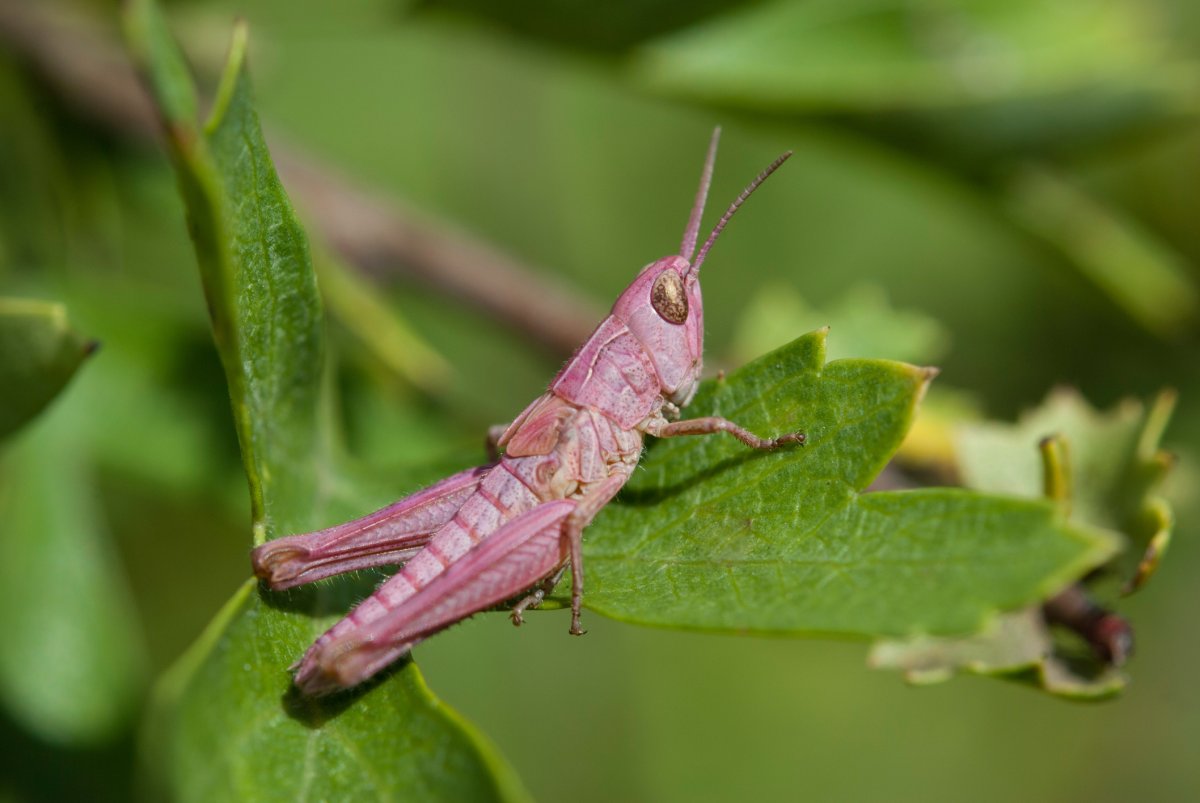Texas resident Allison Barger had an extremely rare visitor come to her garden in Austin last week—a bright pink grasshopper.
The striking critter was discovered by her 3-year-old son, Brooks, on Sunday. Barger then sent a photo of the rose-hued hopper to local news station KXAN.
Roeselien Raimond, a nature photographer and HuffPost contributor, has previously called the bugs the "closest thing to a pink elephant" and said "spotting one is like "looking for a needle in a haystack."
While unusual, Barger's pink visitor is not unique—similarly colorful incarnations of grasshopper have been found in a Wiltshire farm in the U.K., the Belfast hills also in the U.K., and Gunma Prefecture in Japan, among other places.
WOW! Check out this rare pink grasshopper found in a garden in SW Austin. Have you ever seen something like this? Photo courtesy Allison Barger. pic.twitter.com/pWZ6xa6JUF
— KXAN News (@KXAN_News) February 16, 2020
Why pink, not blue or orange?
Most grasshoppers come in murky shades of brown and green. These colors may not be as distinctive or as eye-catching as pink but are much better suited to blending into the long grass and shrubbery the insects call home—and therefore, are much better for escaping the clutches of hungry predators.
However, a rare genetic mutation called erythrism can cause a select few to take on a fuchsia hue, as was the case for the one found in Barger's garden.
Erythrism is a condition that causes a red-tinged discoloration. In humans, the phenomenon can cause people to have red hair and freckles. However, it can affect anything from hair to skin to feathers to eggshells.
A "strawberry" leopard and a rust-colored badger are two more examples of erythrism in the animal kingdom. Another is the bubblegum pink manta ray pictured below.
In most cases, it is caused by a genetic defect that results in a deficiency of eumelanin (dark pigment) or the over-production of pheomelanin (red pigment). However, there have been reports of bees acquiring erythrism after they developed a taste for Red Dye No. 40-tainted sugar syrup from a nearby maraschino cherry factory, showing there may be environmental factors too.
"In [the grasshopper's] case, it could be a genetic mutation causing the production of excess pigment which could be providing some sort of camouflage advantage to living on red plants," Paul Pearce-Kelly, Head of Ectotherms at Zoological Society of London (ZSL), told Newsweek.
"It demonstrates just how diverse and intriguing the world of invertebrate diversity is."
According to Victoria Hillman, the National Geographic Explorer and Research Director for the Transylvanian Wildlife Project, erythrism was first documented in katydid species in 1887.
One explanation for their supposed rarity is the fact that it makes them easy targets for birds and other predators that might see grasshoppers as a tasty snack.
"This erythristic mutation is thought to be a dominant trait among katydid species but as most foliage is green these pink forms rarely survive to adulthood and are consequently seldom seen," Pearce-Kelly explained.
But there may be another reason pink grasshoppers are rare—the vast majority that are found are nymphs (immature grasshoppers), not adults. According to Hillman, nymphs may grow out of their jazzy coloring and develop a more sombre brown or green color as they get older.
Regardless, they are a rare sight—and "so it is a treat to see a grasshopper as beautiful as this," Mark Bushell, assistant curator of invertebrates at Bristol Zoo Gardens, told the BBC in 2012.
The article has been updated to include comments from Paul Pearce-Kelly.

Uncommon Knowledge
Newsweek is committed to challenging conventional wisdom and finding connections in the search for common ground.
Newsweek is committed to challenging conventional wisdom and finding connections in the search for common ground.
About the writer
To read how Newsweek uses AI as a newsroom tool, Click here.








